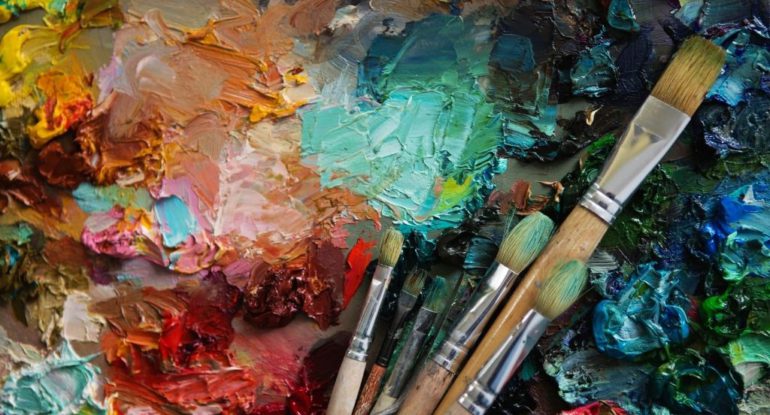Are NFTs Expensive Art or Picture Based Altcoin?

If you follow the crypto Twitter community, you might have heard about a recent controversy that began with a remark by Cobie, a well-known analyst and commentator. He has conducted interviews with people like Vitalik Buterin, Justin Sun, and Michael Saylor on his UpOnly podcast, which is known for its straightforward understanding of all things crypto.
Profit from London’s Biggest Financial Event. We have added new verticals in online trading, fintech, digital assets, blockchain, and payments this year.
Cobie sparked a heated debate on social media when he said that NFTs “are altcoins with images.” Notably, Punk6529, one of the most well-known supporters of NFTs and the growth of the metaverse, concurred with Cobie, saying that the altcoin/picture combination “is a feature, not a defect.”
Are NFTs Pictures-Based Altcoins?
NFTs are crypto tokens, just like altcoins. An NFT differs from an interchangeable token in that it is a singular token (non-fungible) (fungible). A concert ticket is non-fungible in the real world since it is linked to a certain performer or artist and cannot be exchanged for any other ticket. On the other hand, a dollar bill can be exchanged for any other dollar bill since it is fungible.
But even if an NFT is a one-of-a-kind token, why does that make it valuable? Why can’t it be used interchangeably with other products of the same kind? Even if each can be uniquely identified, they are still ERC-721 tokens on the Ethereum blockchain.
A token’s connection to a specific work of art or design, made by a certain person or contained inside a specific collection, is frequently what gives it exceptional worth. Furthermore, even within a single collection, some tokens will be worth more since the associated image possesses unique qualities, making some photographs more valuable than others.
Bored Ape Yacht Club would not have been a well-known project if it had been known as 10,000 ERC-721 Tokens and tied its NFTs to empty files with no images. NFTs are not just altcoins with images; in fact, they are altcoins with images, which is fundamental to their value. The token wouldn’t be valuable without the images, but there are also collections in which the artwork would never have become well-known and command a high price if it weren’t for NFTs.
Although the phrase “altcoins with images” may seem dismissive, it accurately describes how NFTs operate. NFTs are intriguing because they provide the possibility of tokenizing, owning, and quickly trading unique digital goods.
Treats NFTs Like DeFi by Sudoswap
The buying and selling of NFTs may change due to the increasing popularity of Sudoswap, an NFT trading platform. With NFT pools to boost liquidity and the ability to trade along customizable price curves, the Sudoswap marketplace functions more like an automated market maker DeFi protocol than an art auction.
ABC releasing a solana version of sudoswap with the holders of #ABC receiving passive income through the fees WOW @ABC_community1 pic.twitter.com/Kmn1p8QHtA
— Tom.SOL (@TomWeis97209850) August 29, 2022
If we’re being honest, don’t many NFT buyers act as though NFTs are comparable to fungible, niche, and low-supply altcoins in the Sudoswap ecosystem where NFTs are viewed like altcoins?
In NFT trading, the phrase “sweeping the floor” is used. The floor price, often known as the floor price, is the lowest price at which any NFT in a specific collection is sold, making it the most affordable point to purchase a collection. The phrase “to sweep the floor” refers to purchasing a significant portion of a collection’s cheapest items.
The buyer, in this instance, doesn’t appear especially interested in the artwork or its purported non-fungibility; instead, they won’t want every asset that is advertised at a low price. Additionally, they may not want to retain all that stuff forever and are instead purchasing to sell them later for a profit.
Going back to Sudoswap, it has also added the abolition of royalties as a feature. Most of the time, when an NFT is exchanged on secondary markets, a portion of the trade goes to the NFT’s original developer. Some artists, who in more conventional formats would only benefit from the initial sale of an item, have found this quite satisfying.
Trading parties win (in the short run, at least) through Sudoswap’s circumventing of the royalties process, but artists suffer because they no longer profit from secondary sales. By placing market liquidity and frictionless exchange ahead of artists’ rights, NFTs are pushed a little closer to the category of fungible assets.
Also, read – This altcoin is the most significant digital asset to monitor in 2022
The Value of Art is Nothing New
We can be somewhat ambiguous when determining whether NFTs are assets or works of art. They are crypto tokens, which can be verified by looking at the T part of the NFT, but what makes them non-fungible in a figurative sense are the images.
Without the ability to treat NFTs like altcoin-like assets, a protocol like Sudoswap wouldn’t exist, and there wouldn’t have been an explosion of interest in NFTs.
Around NFT technology, vibrant artistic groups, organizations, and movements are growing. The technology has worked as a catalyst, igniting fresh aesthetic currents and serving as an amplifying channel for outsider creative impulses. Consider returning to the old art world and asking, Are the creative items we find there not also assets? as a better way to address how NFTs should be classed.
Regardless of whether they appreciate, or even look at, the paintings on the canvas, there is no doubt that humans have used artwork as physical symbols to transmit and store money, even though this may sound aloof and philistine.
NFTs can be utilized any way you choose, depending on your attitude, as art, an asset, a picture, or a currency. The perplexity over how we should see them comes from the fact that they are flexible, simple to interchange, and category-resistant (in addition to being extremely new) compared to earlier artistic media.



























































